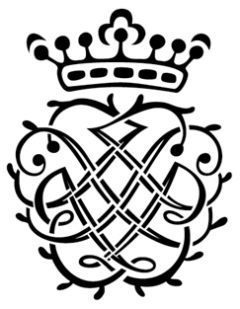Summary
Contrapunctus 14 of The Art of Fugue is known as the unfinished, last Fugue of Johann Sebastian Bach.
Two early versions of Contrapunctus 14 (bwv 1080-19) of Johann Sebastian Bach remains, the autograph (Mus. Ms. P200, Deutsche Staatsbibliothek, Berlin) consisting of 5 pages and the version appeared in the first edition of the Art of Fugue with title ‘Fuga a 3 Soggetti’. The first revised version of Art of Fugue appeared after Bach’s dead and was compiled by Bach’s son Carl Philipp Emanuel Bach.
The fugue has an open end at bar 239. On the last page of the autograph, C.Ph. E. Bach, who was close to Bach in his last days, noted that his father died before finishing this fugue. Through the years several theories are made around the question if Bach made this fugue at the end of his life and what an appropriate end of the unfinished fugue would be. Several composers made a suggestion for the finishing part, all starting at the last bar 239.
This study proves the thesis that the last page of the autograph, page 5, doesn’t belong to the fugue in the way it is used in the first edition and afterwards. The first four pages belong together according the appearance in the first edition. After the fourth page there have consisted another page but this isn’t the remaining page 5 or a part of it.
Besides the obvious different quality of paper and way of writing, a remarkable fact is the non-fitting music-notes at the end of page 4 and beginning of page 5. The original page 5 starts with fis-g in the tenor, the present page 5 starts with fis-gis in the tenor. This can be seen as strong evidence that page 5 doesn’t belong after page 4 as it is used nowadays.
Another point of view is the structure of the music. The little composition and three themes at page 5 are unusual in the overall structure of the fugue. The three subjects at the end suggests an strong relation. The question raises what the relation could be between page 5 and the first four pages.
The first bars of page 5 with the little composition, can be related to the end of the first musical section. In this part Bach has crossed out two bars. It is also this part where C.Ph. E. Bach has made changes, the addition of a bar with the subdominant to complete the cadense, changes in the bars which J.S. Bach crossed out and the bars afterwards.
My conclusion is that page 5 can be interpreted as design of the end of the first section and the themes of the fugue. And in this way as an heritage of Bach telling something about his process of creation.
Following the thesis that page 5 doesn’t belong after page 4, the missing part starts at bar 227 instead of bar 239 considering the bars of the Urtext version, G. Henle Verlag, Paris 1989.
Futhermore, in this study the incompleteness is researched at the end but also in other parts of the work. At the beginning of the second and third section themes can be added. Also a comparison is made with Fugue 4 of the Wohltemperierte Klavier 1 which has a comparable theme structure and overall structure of the fugue.
Contrapunctus 14
